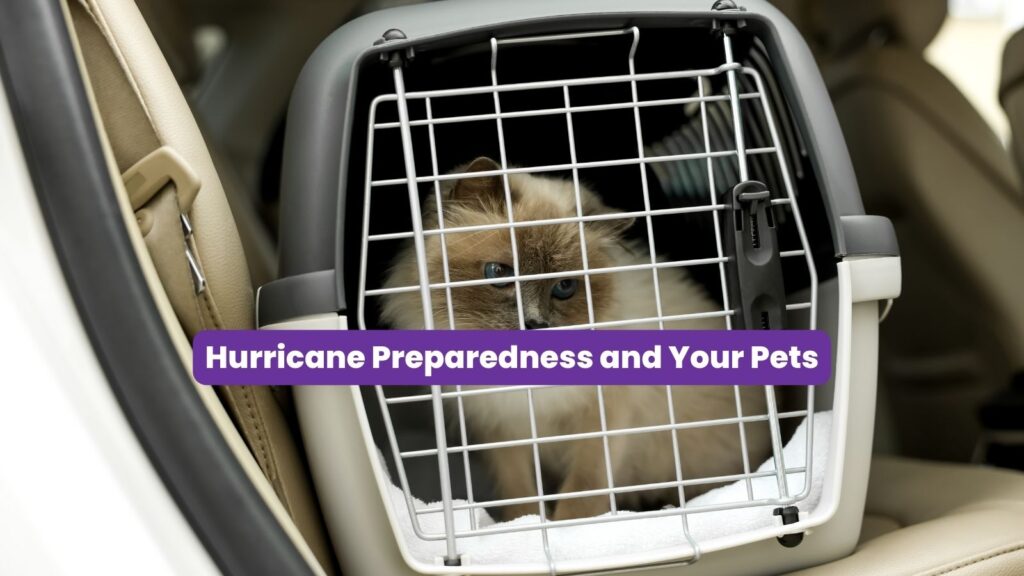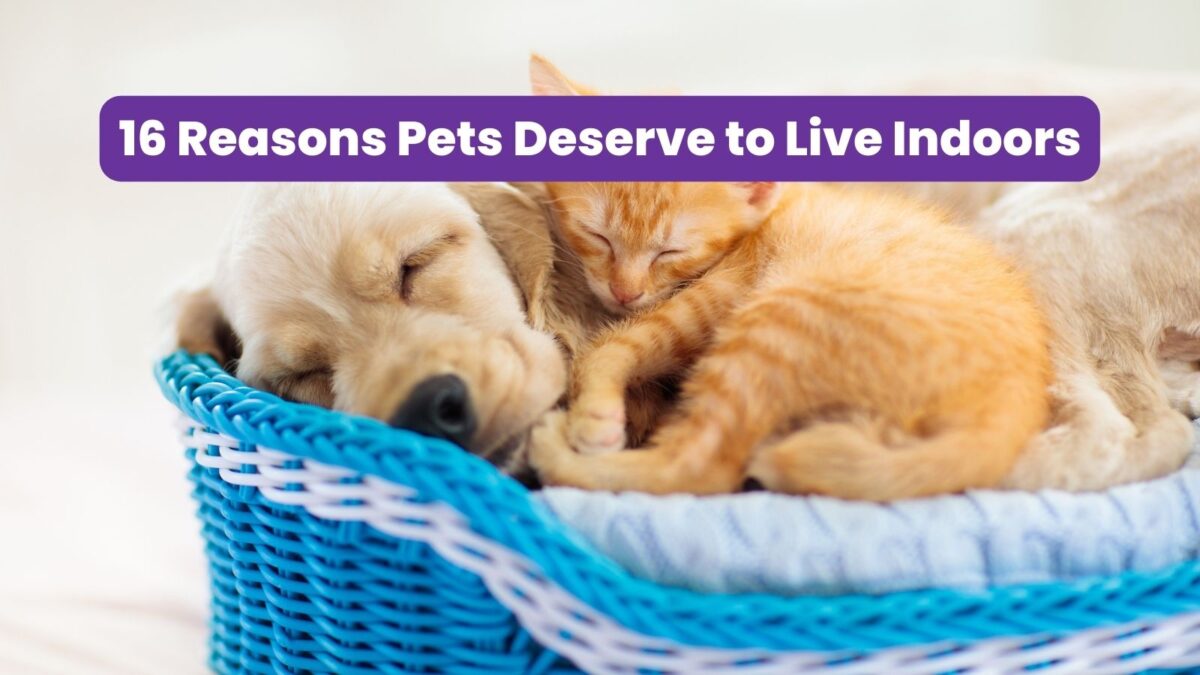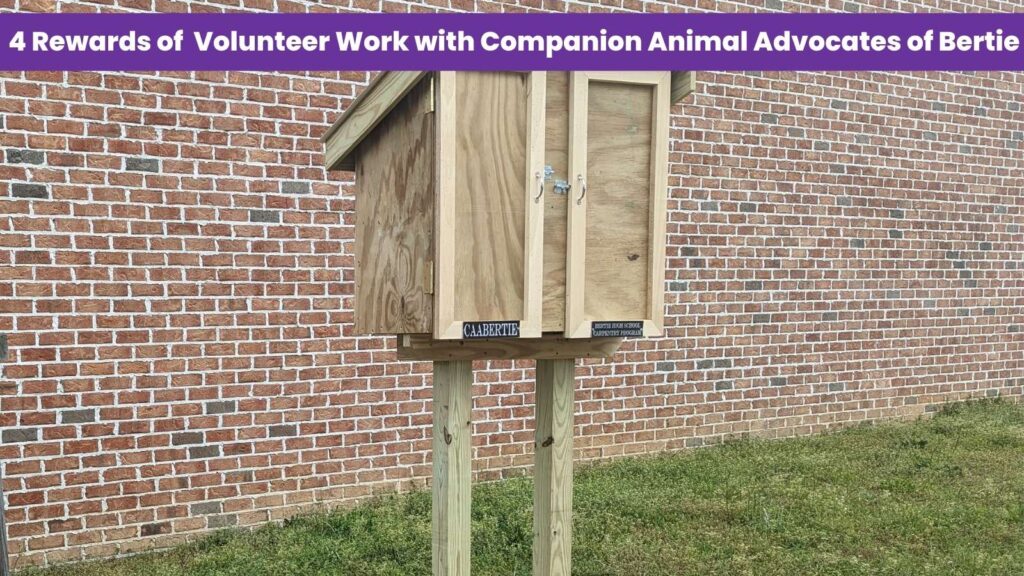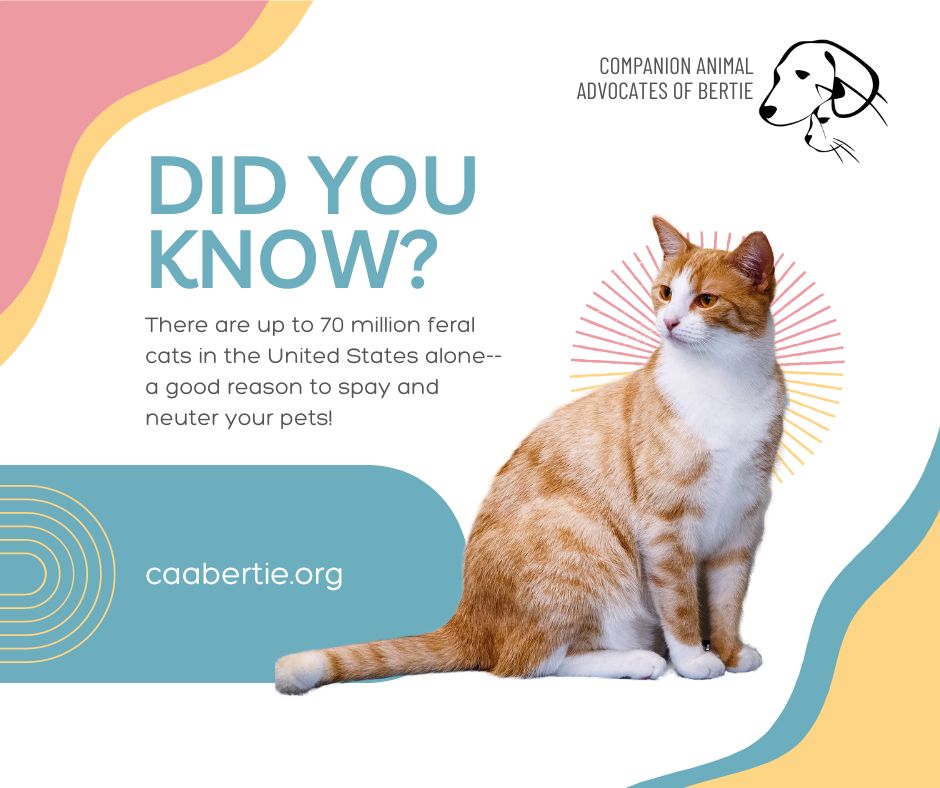As pet owners, we cherish our furry companions and strive to provide them with the best care. One crucial decision is allowing our dogs and cats to live indoors or outdoors.
Some will vehemently argue that outdoor living is natural for pets. But the truth is, that is a cruel, lonely life.
Let’s destroy that argument and put it on the ash heap of history–right now.
Just as ancient humans once lived outdoors or in flimsy dwellings until they discovered the security and comfort of sturdy structures, our understanding of pet care has evolved.
Thus, we must recognize that our domesticated companions have adapted to depend on us for their well-being. Just as we provide ourselves with safe and secure indoor spaces, we are responsible for offering our pets the same protection and care. Appropriate space inside the house ensures their safety and health.
This article discusses sixteen compelling reasons dogs and cats deserve to live indoors.
16 Reasons to Invite Your Pet Indoors

Let’s explore the health, safety, and emotional benefits of indoor living for our beloved pets. Let’s delve into why you are convinced to bring your pets indoors, where they can thrive and lead fulfilling lives.
1 – Protection From Extreme Weather Conditions
Extreme Weather Conditions: Living indoors shields our pets from the dangers of extreme heat, freezing temperatures, storms, and other severe weather conditions. Exposure to extreme temperatures can lead to heatstroke, frostbite, or hypothermia, all of which pose serious health risks to our pets.
2 – Wildlife Encounters Make Pets Safer Indoors
Outdoor living exposes our pets to potential encounters with wild animals, such as snakes, coyotes, or raccoons, which may lead to injuries or the transmission of diseases.
3 – Poisonous Substances
Indoors, we have better control over potential hazards like toxic plants, chemicals, pesticides, or harmful substances that could threaten our pets’ health if ingested. These could include antifreeze, pest control chemicals, or plants.
4 – Reduced Risk of Accidents and Injuries
a. Traffic Accidents: Allowing our pets to roam outdoors unsupervised puts them at risk of being hit by vehicles. Keeping them indoors significantly reduces the chances of such accidents and keeps them safe from busy roads.
5 – Encounters With Strays
Similar to encountering wildlife, living outside exposes our pets to the risk of encounters with aggressive stray animals. These interactions can result in physical harm or the transmission of diseases.
6 – Being Indoors Keeps Pets From Getting Lost
Cats and dogs that roam outdoors are more likely to get lost. This situation leads to distress and potential permanent separation from their families. Indoor living ensures their safety and reduces the risk of them wandering away.
7 – Disease Prevention
Indoor living greatly reduces the chances of our pets contracting diseases from other animals, parasites, or contaminated environments. They are less likely to come into contact with ticks, fleas, or infectious illnesses that could impact their health.
8 – Allergies and Respiratory Conditions
For pets with allergies or respiratory conditions, indoor living provides a controlled environment with minimized exposure to allergens like pollen, dust mites, or mold, which can exacerbate their symptoms.
9 – Bonding and Socialization
Living indoors allows for more frequent and meaningful interactions between pets and their human companions. It facilitates the development of a stronger bond through daily interactions, shared activities, and consistent communication and socialization. This closeness strengthens the emotional connection between pets and their owners.
10 – Mental Stimulation From Interactions Indoors
Inside the house provides ample opportunities for mental stimulation through interactive play, puzzle toys, and training sessions. It helps prevent boredom and enriches their lives, reducing the risk of destructive behaviors that may arise from a lack of mental stimulation.
11 – Reduced Stress and Anxiety
Pets that live indoors are generally calmer and experience lower stress and anxiety levels. They are shielded from loud noises, territorial conflicts with other animals, or the fear of unfamiliar surroundings.
12 – Reduced Noise and Disturbances
Indoor living provides a quieter and more controlled environment for our pets. Unlike outdoor settings, which can be filled with loud noises, barking dogs, or other disturbances, indoor spaces offer a calmer atmosphere that promotes relaxation and a sense of security for our pets.
13 – Protection from Theft or Abduction
Keeping our pets inside minimizes the risk of theft or abduction, ensuring their safety and preventing them from falling into the wrong hands. Sadly, pets left unattended outdoors are more susceptible to being stolen or intentionally taken by individuals with malicious intent.
14 – Compliance with Local Laws and Regulations
Many municipalities have ordinances or regulations that require pets to be kept indoors or adequately contained on the owner’s property. Adhering to these laws not only ensures the safety and well-being of our pets but also avoids potential legal issues or fines associated with non-compliance.
15 – Aging and Special Needs Support
Living inside the house becomes particularly important as pets age or develop special needs. It allows us to provide a comfortable and accessible environment that meets their specific requirements, such as accommodating mobility limitations, monitoring health conditions, or administering medications.
16 – Longevity and Extended Lifespan
Studies have shown that cats who live primarily indoors tend to have longer lifespans than those who spend most of their time outdoors. The points mentioned within the study can also transfer to dogs. Indoor living reduces exposure to risks and hazards, leading to a healthier and extended lifespan for our beloved pets.
The Takeaway: Indoors Is Naturally Safer for Humans and Pets
Remember, each pet is unique, and their specific needs should be considered when determining whether indoor living suits them. While supervised outdoor time and access to safe outdoor spaces can still benefit exercise and stimulation, providing a secure and enriching indoor environment remains the foundation for their overall well-being.
By embracing indoor living for our dogs and cats, we demonstrate our commitment to their health, happiness, and safety. Let’s create a loving and secure environment where they can thrive as cherished members of our families.


